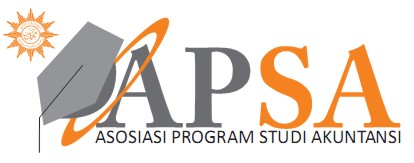Exploration of the challenges and benefits of implementing management accounting information systems in private higher education institutions: A case study at University X
DOI:
https://doi.org/10.18196/jai.v26i2.26301Keywords:
Management Accounting Information System, Operational Efficiency, Financial decision-making, Private Higher Education InstitutionsAbstract
Research aims: This study investigates the implementation of the Management Accounting Information System (MAIS) within Private Higher Education Institutions (PHEIs), emphasizing identifying its advantages, the challenges encountered, and strategies for optimizing its effectiveness.
Design/Methodology/Approach: This research adopts a qualitative approach, utilizing in-depth interviews with key stakeholders to gather comprehensive insights. Employing a case study approach, the research focuses on University X to examine the role of MAIS in enhancing operational efficiency and supporting informed financial decision-making. The informants in this study are nine persons, including administrators and academic officials.
Research findings: The findings reveal that although the MAIS has notably enhanced financial transparency and operational efficiency, several challenges remain, most notably internal limitations related to inadequate human resource capacity in system utilization and external barriers stemming from rigid regulatory frameworks.
Theoretical contribution/Originality: This study offers novel critical and theoretical reasoning on exploring the challenges and benefits of implementing MAIS based on the Resource-Based View (RBV) theory and the Technology Acceptance Model (TAM).
Practitioner/Policy Implication: Private Higher Education Institutions (PHEIs) should actively seek opportunities for collaboration with financial institutions and technology partners to enhance access to development financing. Furthermore, a comprehensive assessment of security measures and risk mitigation strategies is necessary for implementing MAIS, given the critical importance of data protection in digital financial environments.
Research limitation: This study does not delve deeply into the technological dimensions of system security, particularly the risks associated with cyberattacks and the corresponding mitigation strategies in the context of MAIS implementation.
References
Ahyani, H., Muharir, M., Khairuddin, K., Rahman, E. T., Wibowo, D. E., Ulummudin, U., ... & Lousada, S. A. N. (2025). Minimum Wages and Welfare of Private Lecturers in Indonesia: Perspectives of Islamic Law and Positive Law. Abdurrauf Law and Sharia, 2(1), 1-21.
Azem Qashou, A. M., Bahar, N., & Mohamed, H. (2025). Qualitative Exploration of Data Security Risks in Mobile Cloud Computing for Higher Education. Security and Privacy, 8(2), e70001. https://doi.org/10.1002/spy2.70001
Barney, J. (1986). Strategic factor markets: expectations, luck, and business strategy. Management Science, 32, 1231–1241. https://doi.org/10.1287/mnsc.32.10.1231
Barney, J. (1991). Firm resources and sustained competitive advantage. 17(1), 99-120. https://doi.org/10.1177/014920639101700108
Brand, D. K. B. (2007). Management control systems.
Cavélius, F., Endenich, C., & Zicari, A. (2020). Back to basics or ready for take-off? The tensions on the role of management controllers in the digital age. Comptabilite-Controle-Audit, 26(2), 89-123. https://doi.org/10.3917/cca.262.0089
Creswell, J. W., & Creswell, J. D. (2017). Research design: Qualitative, quantitative, and mixed methods approaches: Sage publications.
Davis, F. D. (1989). Technology acceptance model: TAM. Seeking Behavior and Technology Adoption, 205(219), 5.
French, S. (2010). Decision Support Systems. In D. Rios Insua & S. French (Eds.), e-Democracy: A Group Decision and Negotiation Perspective. Dordrecht: Springer Netherlands. https://doi.org/10.1007/978-90-481-9045-4_5
Gelinas, L., & Kesselheim, J. C. (2018). Social Media and Pediatric Research Recruitment. Ethics Research with Children: A Case-Based Approach. https://doi.org/10.1093/med-psych/9780190647254.003.0013
Hasniza Haron, N., Kamal Abdul Rahman, I., & Smith, M. (2013). Management accounting practices and the turnaround process. Asian Review of Accounting, 21(2), 100-112.https://doi.org/10.1108/ARA-01-2012-0001
Horodyskyi, M. P., Hrabchuk, I. L., Bereznyi, O. V., Fedorova, O. S., & Iefremov, I. M. (2025). Information systems development in accounting: A systematic network study. Paper presented at the CEUR Workshop Proceedings.
Igbaria, M., Zinatelli, N., Cragg, P., & Cavaye, A. L. (1997). Personal computing acceptance factors in small firms: a structural equation model. MIS quarterly, 279-305. https://doi.org/10.2307/249498
Ismail, S. M. A., & Salama, G. E. (2025). Components and Architecture of Project Management Information Systems: Exploring PMIS Dynamics. In Project Management Information Systems: Empowering Decision Making and Execution: IGI Global Scientific Publishing. https://doi.org/10.4018/979-8-3373-0700-8.ch002
Kasilingam, D., & Krishna, R. (2022). Understanding the adoption and willingness to pay for internet of things services. International Journal of Consumer Studies, 46(1), 102-131. https://doi.org/10.1111/ijcs.12648
Lestari, D. (2019). Measuring e-commerce adoption behaviour among gen-Z in Jakarta, Indonesia. Economic Analysis And Policy, 64, 103-115. https://doi.org/10.1016/j.eap.2019.08.004
Lui, H. K., & Jamieson, R. (2003). TriTAM: a model for integrating trust and risk perceptions in business-to-consumer electronic commerce. Paper presented at the 16th Bled Electronic Commerce Conference, Slovenia.
McMillan, K., Kates, A., & Kesler, G. (2025). Rethinking Operating Models: Designing People and Technology Powered Organizations: Kogan Page Publishers.
Mu'min, M. B., & Nugraha, M. S. (2024). Challenges And Opportunities Of Management Information System (Mis) Implementation In Islamic Education Institutions. 1(2), 209-238.
Nuraliaty, A., Astuti, A., & Febrianti, P. D. (2025). The Influence of Management Accounting Information System Characteristics and Organizational Culture on Managerial Performance. JASa (Jurnal Akuntansi, Audit dan Sistem Informasi Akuntansi), 9(1), 33-42. https://doi.org/10.36555/jasa.v9i1.2771
Pham, T. L., Dau, T. K. T., & Nguyen, P. B. A. (2025). The Structural Model of Software Adoption and Organizational Performance: Innovation Acceptance Perspective. Journal of the Knowledge Economy, 1-36. https://doi.org/10.1007/s13132-025-02620-0
Puspitawati, L., Lhutfi, I., & Qudratov, I. (2024). Enhancing inventory efficiency: the role of Strategic Management Accounting and Integrated Management Accounting Information systems. Cogent Business & Management, 11(1), 2429801. https://doi.org/10.1080/23311975.2024.2429801
Romney, M. B., & Steinbart, P. J. (2018). Accounting Information Systems. In: Pearson Education Limited, England.
Sadri, P. (2025). Factors affecting the quality of management accounting information systems emphasizing on the implementation of corporate governance. 10(39), 191-202.
Saleh, Q. Y., & Al-Nimer, M. B. (2022). The mediating role of the management accounting information system in the relationship between innovation strategy and financial performance in the Jordanian industrial companies. Cogent Business & Management, 9(1), 2135206. https://doi.org/10.1080/23311975.2022.2135206
Stallings, W. (2018). Effective cybersecurity: a guide to using best practices and standards: Addison-Wesley Professional.
Steelman, S. (2024). Exploring Defensive Security Strategies It Leaders Need to Safeguard Their Information Assets in Private Higher Education: A Qualitative Study. Colorado Technical University,
Sugiyono, P. J. B. (2018). Quantitative, qualitative, and R&D research methods.
Szajna, B. (1994). Software evaluation and choice: Predictive validation of the technology acceptance instrument. MIS quarterly, 319-324. https://doi.org/10.2307/249621
Thakur, R., & Srivastava, M. (2013). Customer usage intention of mobile commerce in India: an empirical study. Journal of Indian Business Research, 5(1), 52-72. https://doi.org/10.1108/17554191311303385
Venkatesh, V., Morris, M. G., Davis, G. B., & Davis, F. D. (2003). User acceptance of information technology: Toward a unified view. MIS quarterly, 425-478. https://doi.org/10.2307/30036540
Wernerfelt, B. (2016). Adaptation, specialization, and the theory of the firm: Foundations of the resource-based view: Cambridge University Press. https://doi.org/10.1017/CBO9781316466872
Downloads
Published
How to Cite
Issue
Section
License
Copyright (c) 2025 Anggis Mawarti, Rizal Yaya

This work is licensed under a Creative Commons Attribution-NonCommercial-NoDerivatives 4.0 International License.
License
 Journal of Accounting and Investment is licensed under Creative Commons Attribution Attribution-NonCommercial-NoDerivatives 4.0 International License.
Journal of Accounting and Investment is licensed under Creative Commons Attribution Attribution-NonCommercial-NoDerivatives 4.0 International License.




